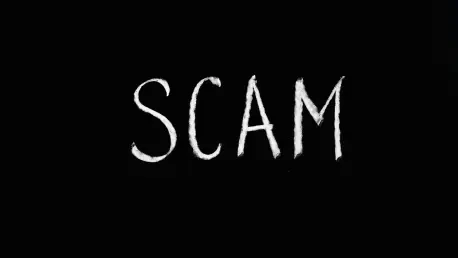What happens when the very system designed to protect accident victims becomes a playground for deceit? In New York, a staggering web of alleged fraud has emerged, with Allstate Insurance Company taking a bold stand against two podiatrists accused of exploiting the state’s No-Fault insurance framework, raising serious concerns about trust and integrity. This case, involving claims worth over $705,000, isn’t just about numbers—it’s about the hidden schemes that could affect anyone filing a claim after a car crash. The accusations paint a chilling picture of sham medical practices and illicit kickbacks, drawing attention to a problem that reaches far beyond a single lawsuit.
Why This Case Matters
At the heart of this legal battle lies a critical issue: the vulnerability of New York’s No-Fault insurance system, intended to ensure quick medical payments for car accident victims without the hassle of determining blame. Allstate’s lawsuit against Dr. Jeffrey I. Kriegel and Dr. William Michael Levine, filed in the United States District Court for the Eastern District of New York, reveals how such a well-meaning structure can be manipulated. The insurer alleges that fraudulent claims not only drain financial resources but also burden honest policyholders with higher premiums, as the cost of deception ripples through the system.
The significance of this case extends to the broader insurance landscape, where organized fraud is estimated to cost New York insurers millions annually. Industry reports highlight that schemes like the one alleged here undermine confidence in both healthcare providers and insurers. For accident victims, the stakes are personal—relying on medical care that might be unnecessary or fictitious can delay genuine recovery. This lawsuit serves as a wake-up call, spotlighting the urgent need to safeguard a system meant to protect the vulnerable.
The Alleged Scheme Exposed
Allstate’s complaint details a sophisticated operation that began gaining traction in recent years, accusing the podiatrists of acting as fronts for practices secretly controlled by unlicensed, non-medical individuals—a direct violation of New York law. The insurer claims that these sham entities collaborated with at least sixteen No-Fault clinics in the New York metro area to channel insured patients into a cycle of fabricated or unneeded treatments. Services like shockwave therapy and electrical neurostimulation were allegedly billed, often without proper execution or by unqualified staff, racking up fraudulent claims exceeding $705,000, of which Allstate paid out over $86,000.
Delving deeper, the accusations include manipulative billing tactics, such as using incorrect codes or resubmitting altered claims to sidestep fee restrictions. Documentation supporting these charges was reportedly falsified, with identical treatment records recycled across patients to mask the deception. This multi-layered setup, according to the insurer, wasn’t just opportunistic—it was a calculated effort to exploit regulatory gaps, turning a safety net for accident victims into a profit machine for a select few.
Voices from the Trenches
Speaking on the challenges insurers face, an Allstate spokesperson remarked, “Fraudulent schemes like this inflate costs for everyone, eroding the foundation of fair insurance practices.” This sentiment aligns with industry analyses, which suggest that No-Fault fraud remains a persistent thorn in the side of insurers, often involving networks of clinics and intermediaries. Legal experts note that the issue of lay ownership of medical practices, central to this case, continues to evade strict enforcement despite clear state prohibitions, creating fertile ground for abuse.
The defendants, Kriegel and Levine, have yet to publicly counter the allegations, but their eventual response could shift the narrative. They might argue that the treatments were legitimate or attribute discrepancies to clerical oversights rather than intentional fraud. Such defenses, if raised, would highlight the difficulty of proving intent in complex fraud cases, where the line between error and malice can blur. These opposing viewpoints underscore a broader tension in the fight against insurance scams—balancing accountability with the risk of unfairly targeting providers.
Systemic Flaws Under the Microscope
Beyond the specifics of this lawsuit, the allegations point to deeper cracks in the No-Fault system that enable such exploitation. The involvement of unlicensed individuals controlling medical practices isn’t a new concern, yet enforcement struggles to keep pace with evolving schemes. Insurers argue that without tighter regulations and better coordination with state authorities, these loopholes will persist, allowing fraud to flourish under the guise of legitimate healthcare.
Another troubling aspect is the impact on accident victims, who may unknowingly become pawns in these schemes. Pressure to visit specific providers or undergo unnecessary procedures can compromise their care, while insurers like Allstate face the daunting task of distinguishing genuine claims from fabricated ones. This case illustrates how systemic weaknesses, combined with coordinated deceit, create a perfect storm that threatens the integrity of insurance meant to serve the public.
Strategies to Combat the Fraud Epidemic
Addressing No-Fault fraud requires a multi-pronged approach, and this lawsuit offers valuable lessons for stakeholders. Insurers can adopt stricter vetting processes, such as cross-referencing provider credentials and scrutinizing treatment patterns for signs of duplication or exaggeration. Collaboration with regulatory bodies to close gaps around lay control of medical entities is also critical, as current laws often lack the teeth needed for deterrence.
Equally important is empowering policyholders with knowledge about potential red flags, like being steered toward certain clinics or treatments without clear justification. Legal actions, such as Allstate’s push for damages, racketeering charges, and an injunction against the defendants, set a precedent for aggressive prosecution that could inspire other insurers to follow suit. While no single solution will eradicate fraud, these steps collectively strengthen the defenses of a system under siege, ensuring that genuine victims aren’t sidelined by profiteering schemes.
Looking back, Allstate’s legal pursuit against the accused podiatrists stood as a pivotal moment in exposing the dark underbelly of No-Fault insurance fraud. The intricate web of sham practices and illicit arrangements, once brought to light, demanded action from all corners of the industry. Moving forward, insurers, regulators, and lawmakers had to prioritize innovative fraud detection tools and stricter oversight to prevent similar schemes. Policyholders, too, needed accessible resources to navigate claims without falling prey to manipulation. The resolution of this case, though uncertain at the time, promised to shape future safeguards, offering hope that the balance between protection and accountability could be restored.









